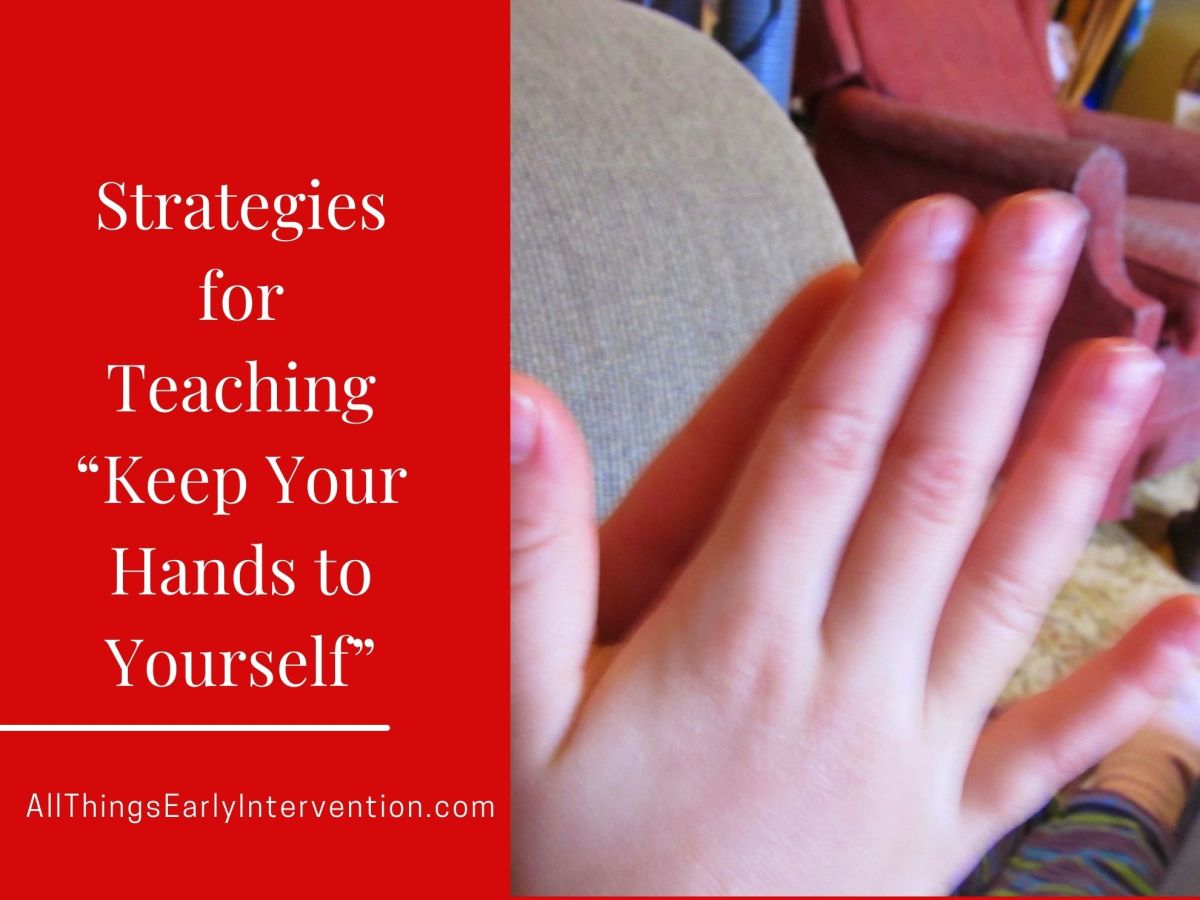Background
When I was in 4th grade, we had classroom rules. If we did something wrong, our name was written on the board, which meant we had a warning. If we got a checkmark, we had to write the rules three times as punishment.
I got in trouble for talking sometimes. I was a talker. I liked to talk to my friends. If you know me, you know that is an understatement. Thanks to my frequent opportunities to write the rules repeatedly, I will never forget the number one rule: “Keep hands, feet, and other objects to yourself.”
Present Day
Recently, we had a foster child, Little Monkey, who was constantly touching, grabbing, hitting, and pinching with his hands. He could NOT keep his hands to himself! You could just see the glimmer in his eye when he got the idea that he was going to touch something.
For example, if he saw a necklace I was wearing, he couldn’t help himself. He grabbed the necklace.
Another examples, he gently touched Big Sister’s hair until gradually it wasn’t so gentle anymore, then it turned into pulling.
Another common scenario was if someone (a perfect stranger) was wearing a shirt that said “Old Navy,” he would get excited and want to point to and then touch the “O.” He would be so proud of himself, but he had no sense of personal space.
I found myself gently reminding him to keep his hands to himself all day long, but he did NOT understand. He was a sweet boy who tried his hardest but bless his heart. He would not stop touching everything and everybody.
Problem
I said, “Keep your hands off your friend” he would just try harder.
It would inevitably lead to a power struggle if I was too firm in my insistence that he keep his hands to himself. If you got into a power struggle with Little Monkey, it would turn into a tantrum. Every. Single. Time.
I was curious
In Early Intervention and in parenting, I have always been taught the wise advice to “teach children what TO DO instead of what NOT TO DO.” It got me thinking about how to apply that to teaching a child the rule of keeping your hands to yourself.
If you examine the phrase “keep your hands to yourself” closely, you notice that it is not clear and concrete. The language of keeping something “to yourself” was perhaps a little over his head.
New Idea was born
I had the idea to make this language clearer by giving him small tasks to do with his hands that would earn him praise, reinforce his learning of the behavior, and distract him from what he was trying to do.
So I tried it
My most common distracting instructions were
“Where is your pocket?”
“What is in your pocket?”
“Can you put your hands in your pockets?”
This simple request would result in his hands and brain being completely distracted by what was in his pockets, showing me his pocket lint or playground rocks.
Other examples of these distracting hand tasks include:
- Touch your nose.
- Wiggle your fingers.
- Touch your ear.
- Pat your head.
- Touch your belly button.
- Clap your hands.
This might not work for every child, but it worked wonderfully for him.
If he gets excited and starts pulling hair, instead of saying, “Stop pulling her hair,” which would cause him to scream and maybe bite, I tried this approach.
“Hey buddy, can you pat your head? GOOD JOB! Where’s your nose? You found it!” And so on…
While distracted by his simple instruction success, he forgets about the hair, giving that person with the hair time to escape.
Over time, his tolerance to the interaction was such that I was eventually able to say,
“She doesn’t like it when you touch her hair. Let’s do something else with your hands,”
Then, launch right into the pocket or other hand-related tasks. I followed up with,
“You did a good job keeping your hands to yourself,”
I’m hoping that I can teach him to pair the phrase “keep your hands yourself” with that positive experience.
Results: it worked
I had success with it more often than not, but It worked even better if I used the tactic before he actually got his hands on something he wasn’t supposed to.
Keeping your hands, feet, and other objects to yourself is an acceptable rule for a 4th grader but a little difficult for a child on a 2-year-old level to understand and obey. Providing simple, easy-to-follow tasks can distract from bad behavior, allow positive feedback, and eventually teach the good social skill of “keeping your hands to yourself.”
Others have similar ideas
When researching for this post idea, I found this blog post and video about distracting the distractor. Here, Jennifer explains her “distract the distractor” technique, which would be a big kid version of this.
“These small, off-task behaviors happen all the time. Depending on how you handle them, they could either go away or escalate into a full-scale blowup. In this video, I’ll describe a small but powerful classroom management technique called “Distract the Distractor,” where instead of calling attention to the off-task behavior, you re-engage the student with a content-based question.”
Jennifer Gonzalez (APRIL 25, 2014). Distract the distractor: Stop off-task behavior without drama. Retrieved from https://www.cultofpedagogy.com/distract-the-distractor/
In Little Monkey’s situation, his “content-based questions” were positive, socially accepting hand-related tasks.
How about you?
What do you think? Has anyone ever used this approach in therapy or with your own child? I’d love to hear about it in the comments.
Discover more from All Things Early Intervention
Subscribe to get the latest posts to your email.


